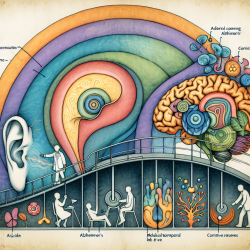The persistent income-achievement gap in education has long puzzled educators and researchers alike. Recent studies have begun to unravel this complex issue by examining the neural mechanisms that contribute to disparities in academic performance. A pivotal study titled "Neural mechanisms underlying the income-achievement gap: The role of the ventral visual stream" sheds light on how differences in brain function can influence educational outcomes.
The Ventral Visual Stream and Academic Achievement
The ventral visual stream (VVS) is a crucial part of the brain involved in processing visual stimuli. It plays a significant role in supporting complex attentional processes and executive functions (EF), which are critical for academic success. The study highlights that children from lower socioeconomic status (SES) backgrounds often exhibit differences in VVS activation compared to their higher-SES peers.
The research used functional MRI (fMRI) to investigate how SES-related differences in neural function manifest during tasks requiring attention to visual information. It was found that VVS activation during these tasks was linked to both EF and academic achievement. This suggests that enhancing VVS function could be a pathway to improving educational outcomes for children from low-SES backgrounds.
Cognitive Stimulation as a Mediator
An intriguing finding from the study is the role of cognitive stimulation as a mediator between SES and VVS activation. Cognitive stimulation in early childhood, particularly through caregiver interactions, can significantly influence the development of VVS and higher-order cognitive skills. This highlights an actionable area for practitioners: fostering environments rich in cognitive stimulation could mitigate some SES-related disparities in brain function and academic performance.
Practical Implications for Practitioners
- Enhance Cognitive Stimulation: Encourage caregivers to engage children in activities that promote attention to visual details and categorization of stimuli. This can include interactive reading sessions or educational games that emphasize visual processing.
- Focus on Executive Function Development: Incorporate activities that strengthen EF skills such as working memory, cognitive flexibility, and inhibitory control into educational programs.
- Create Supportive Learning Environments: Schools and educators should aim to provide enriching experiences that stimulate cognitive growth, particularly for students from lower-SES backgrounds.
The Road Ahead
This research underscores the importance of understanding neural mechanisms when addressing educational disparities. By focusing on enhancing cognitive stimulation and supporting VVS development, practitioners can play a pivotal role in closing the income-achievement gap.










